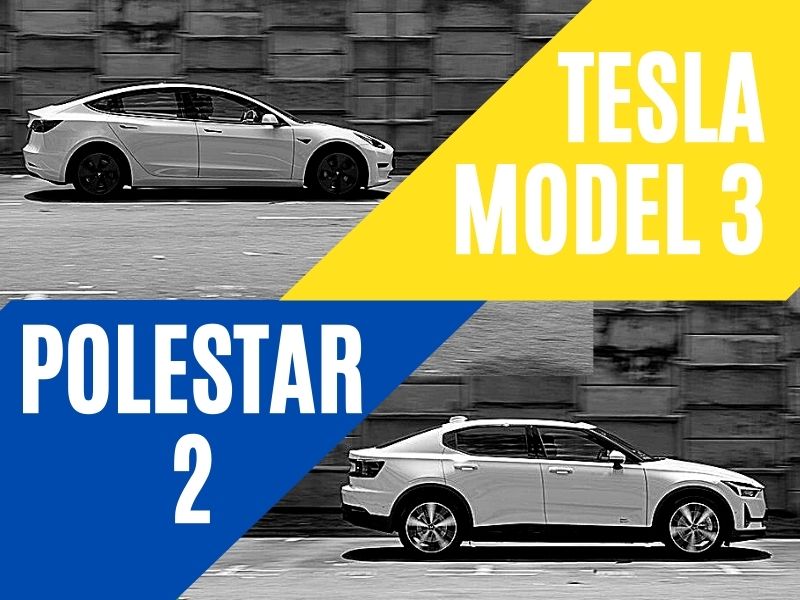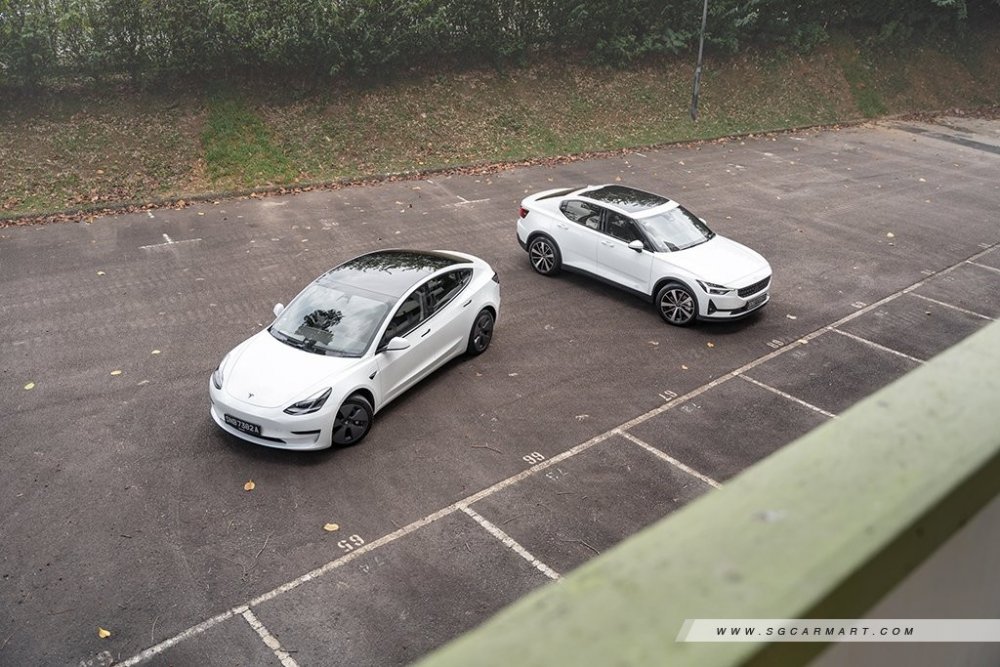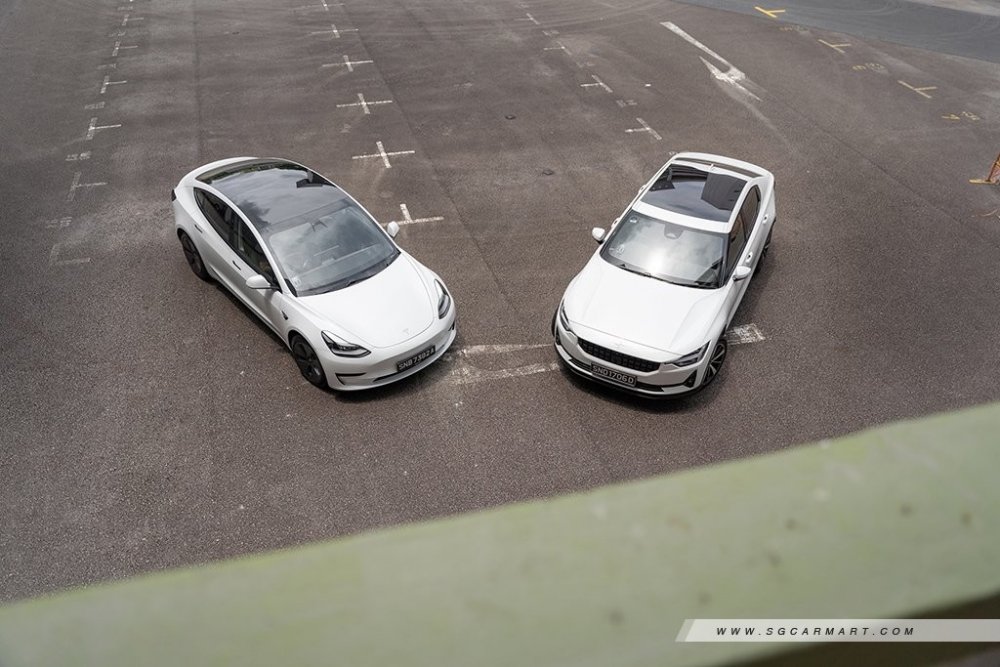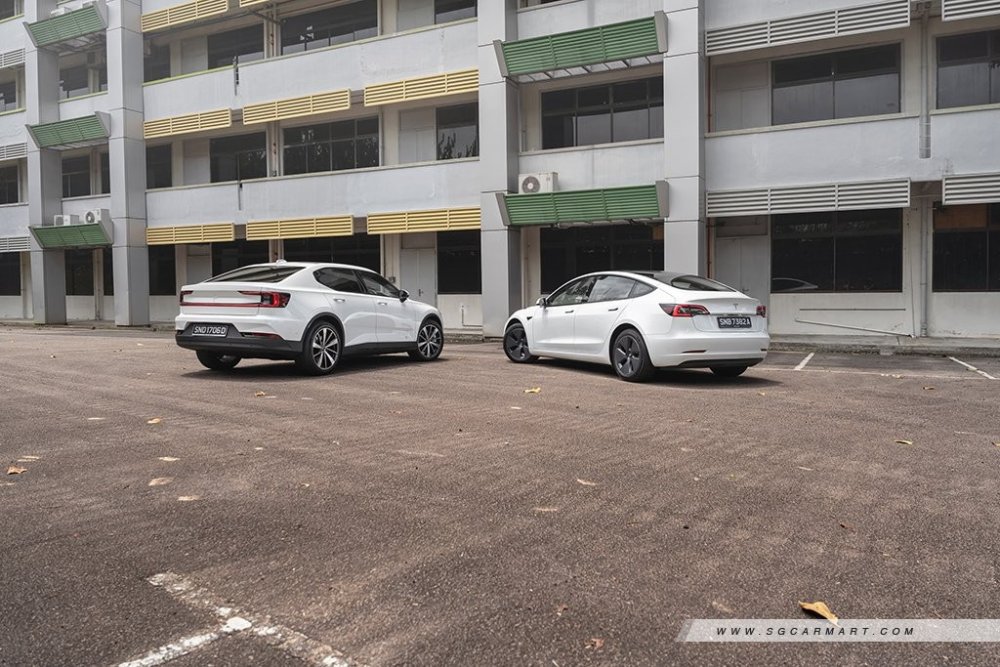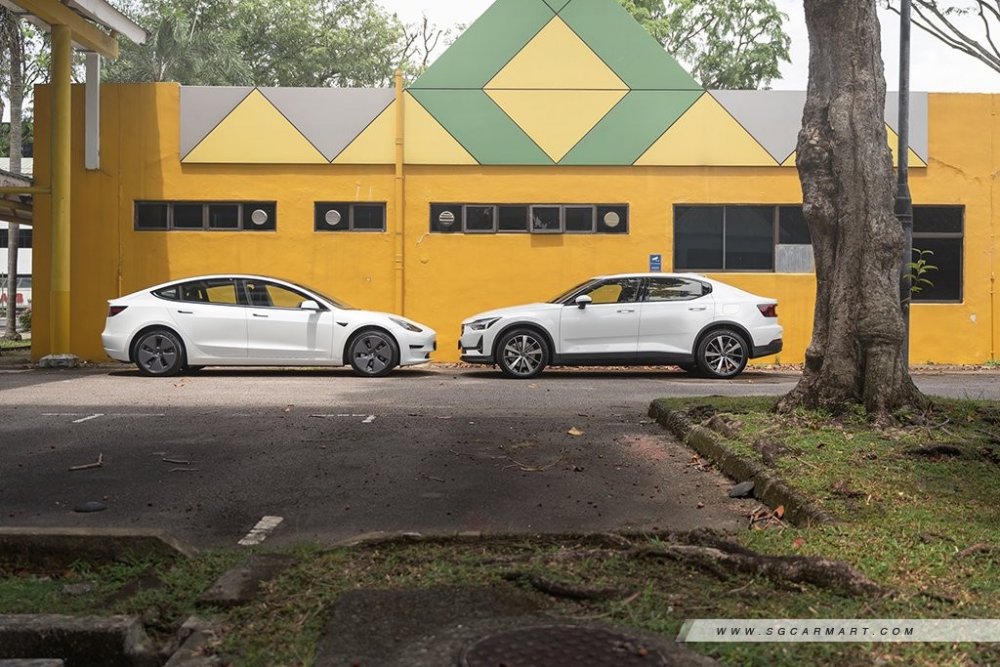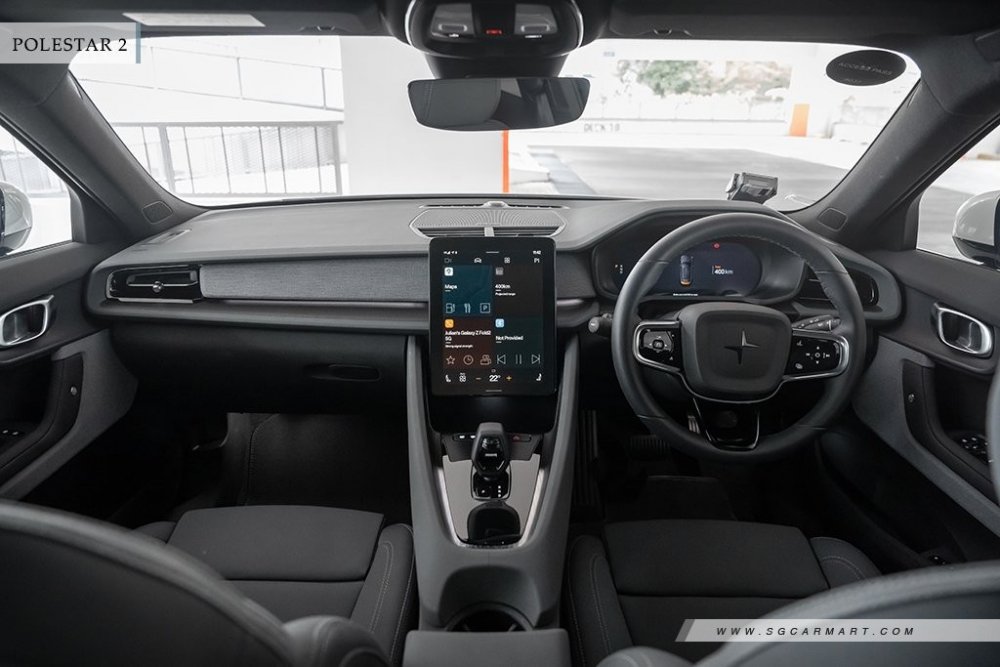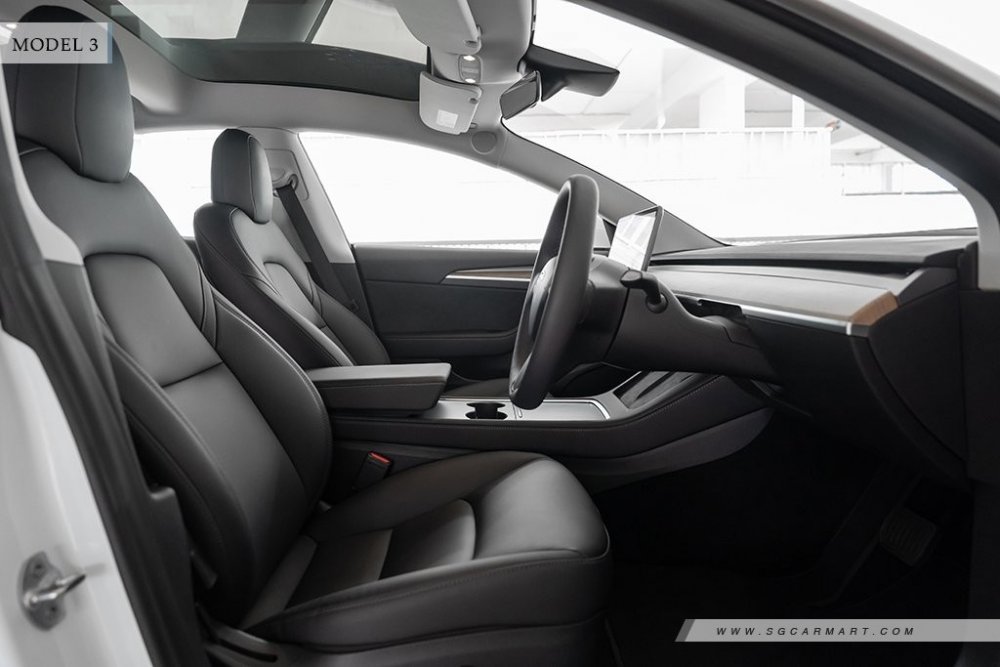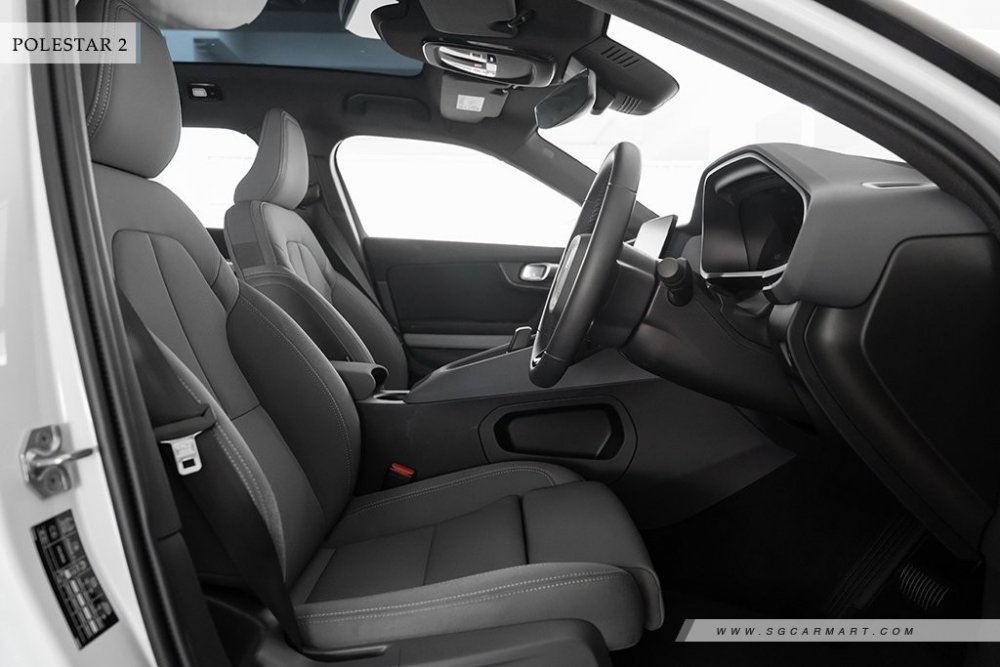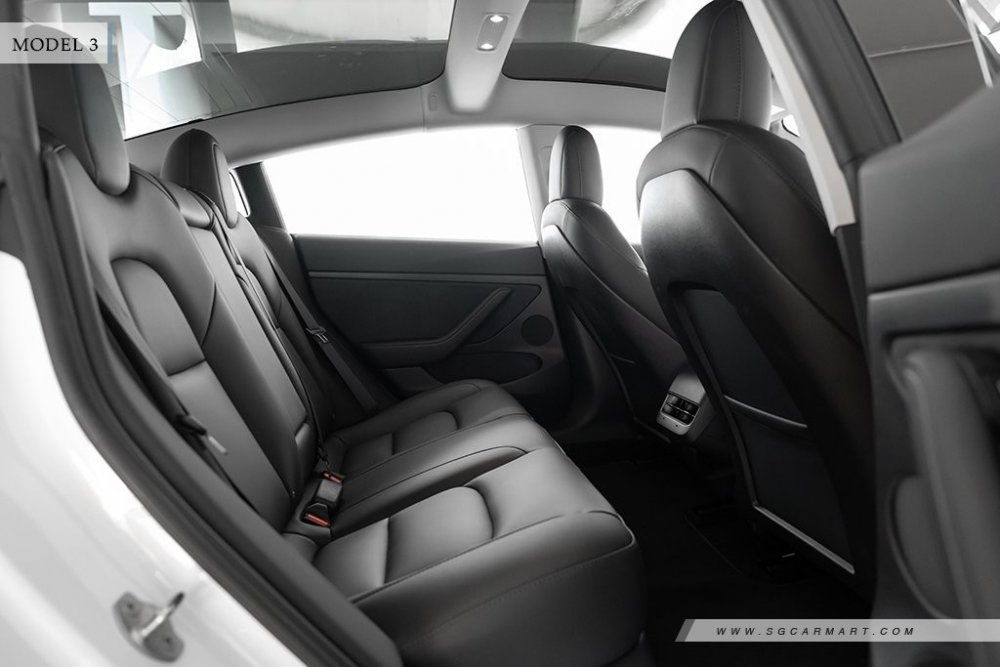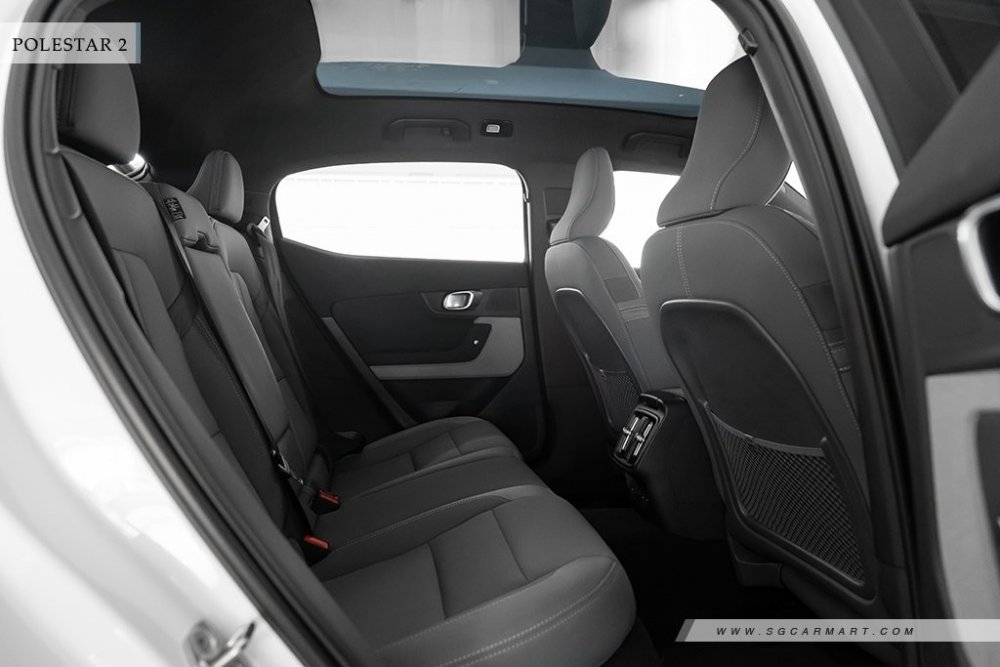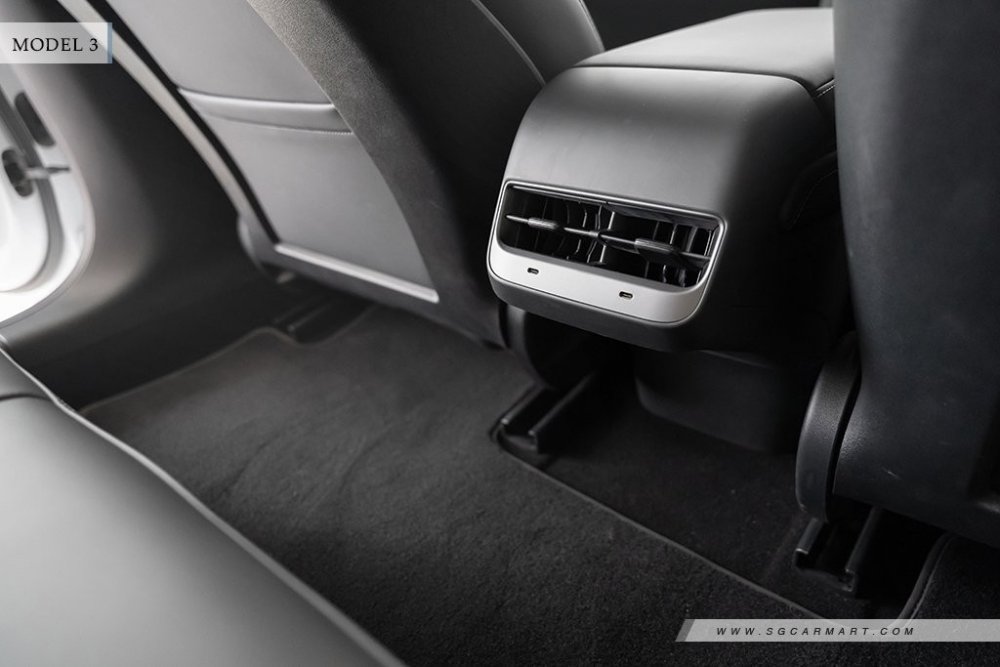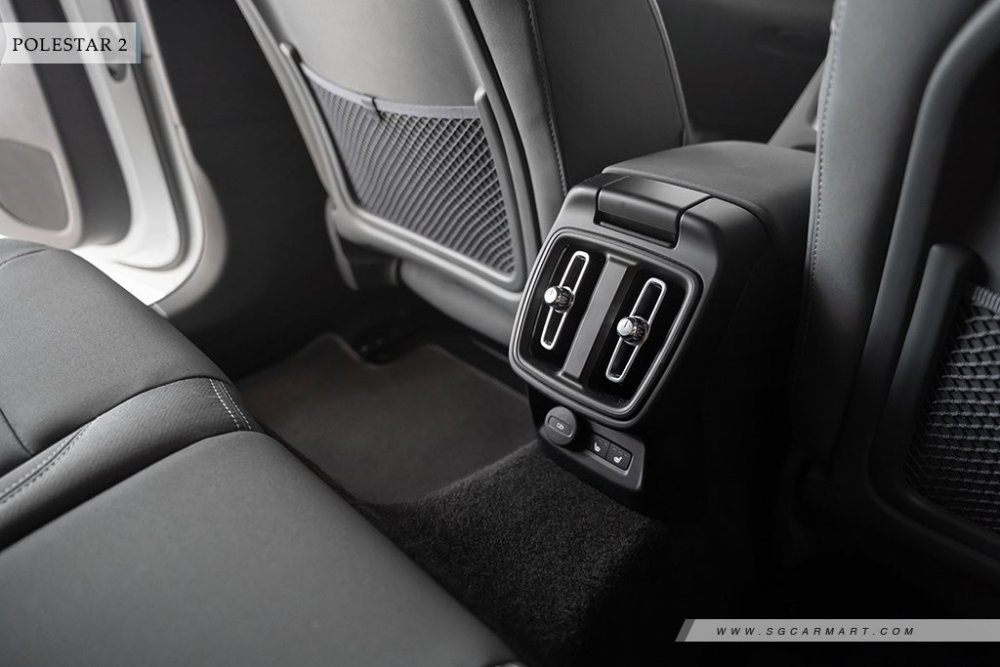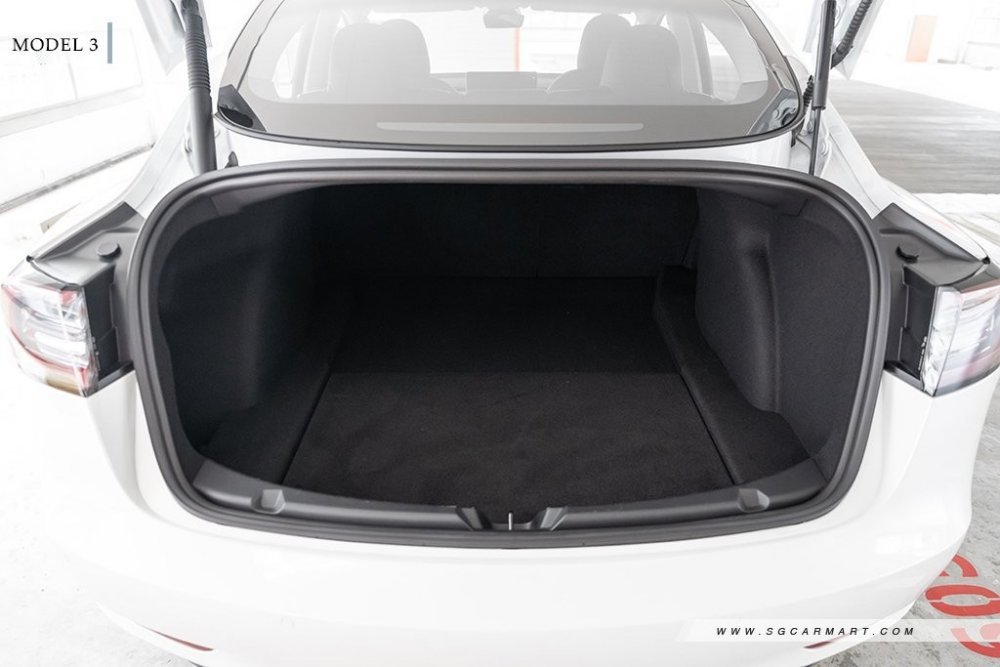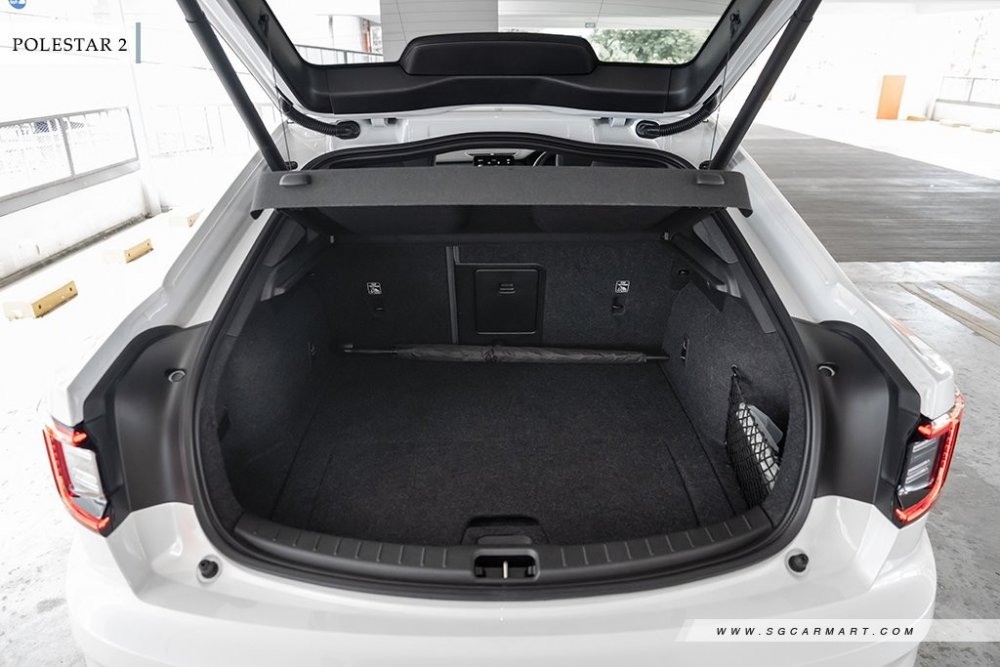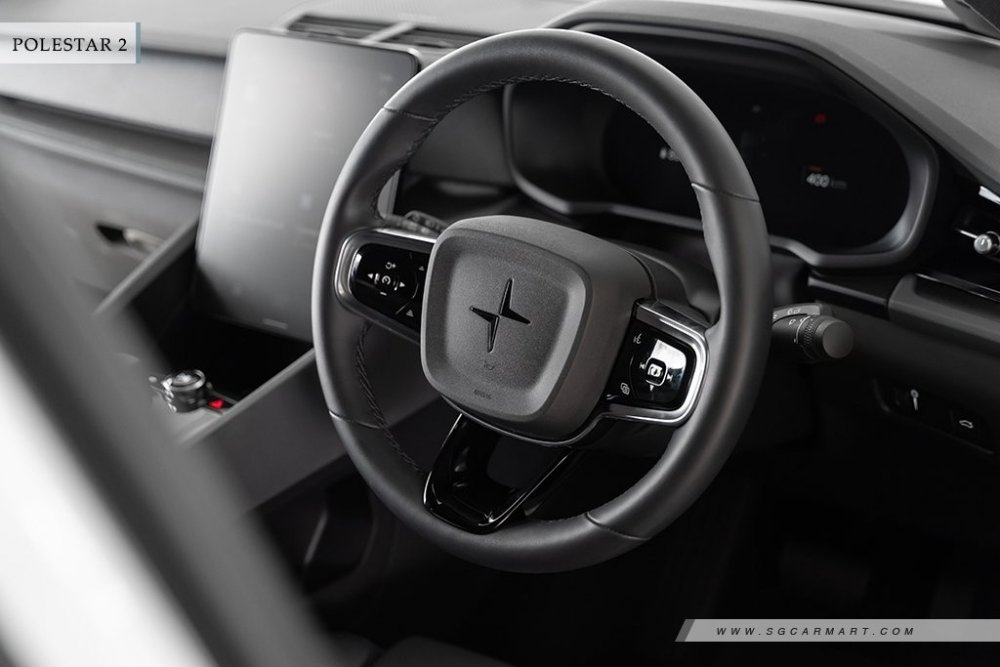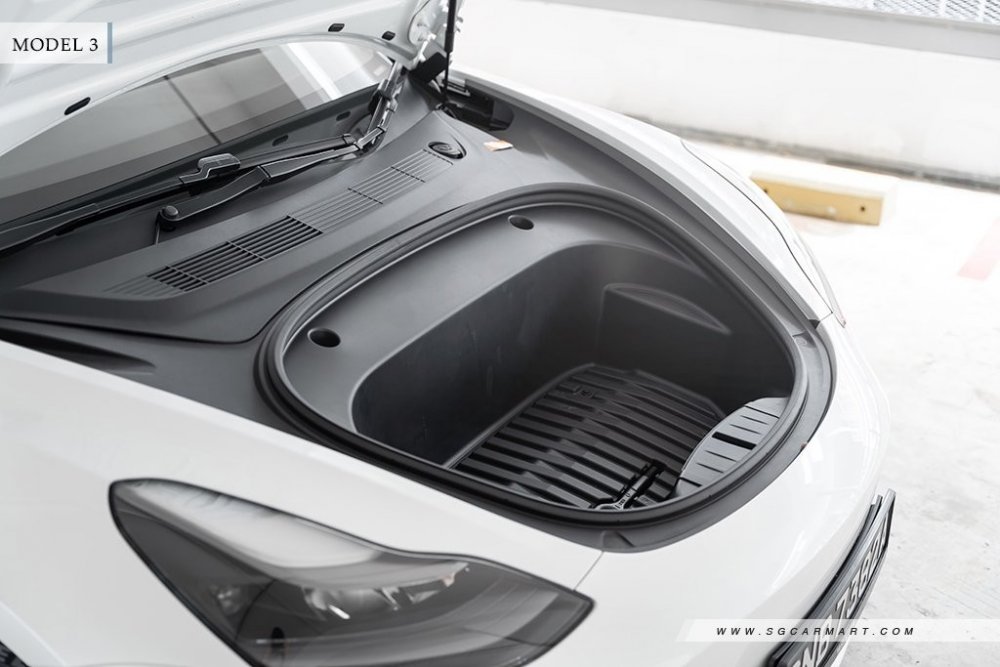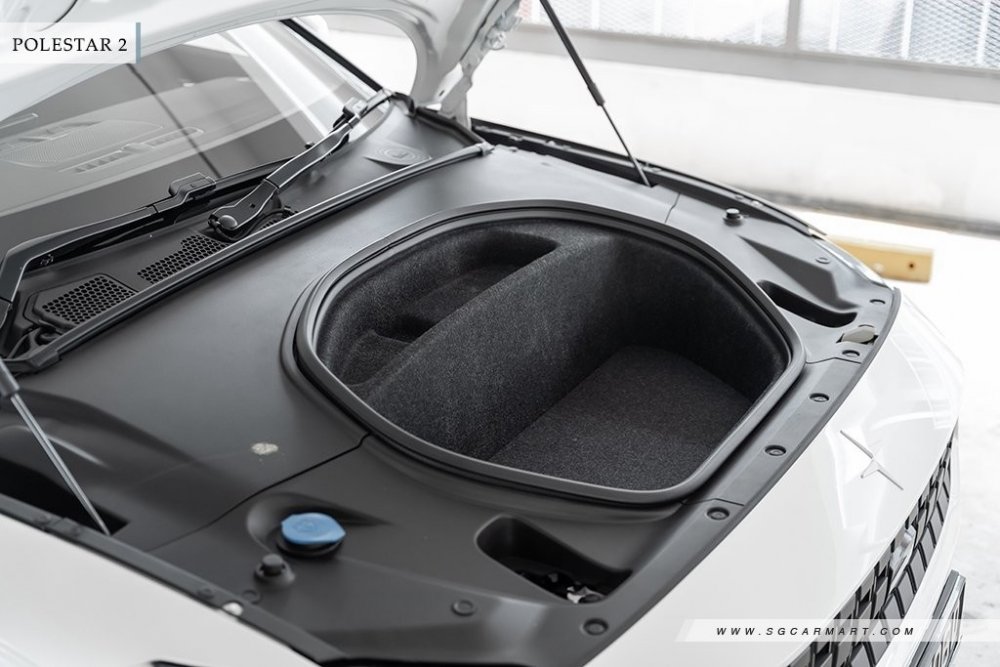Search the Community
Showing results for tags 'polestar'.
-
A serious Taycan competitor is on the way but... ... official production has yet to be confirmed. Polestar 5 Touted as a GT, the five-door electric liftback won't have a rear window but that shouldn't be much of an issue given how advanced rearview cameras are nowadays. Nevertheless, some people might be put off by the absence of rear glass (just like me). It has a rakish, coupe-like roofline and a more practical tailgate compared to the Taycan and its sister model, the Audi E-Tron GT, which both have a trunk lid. Compared to the concept, it has lost the ultra-slim side cameras and suicide doors while gaining a B-pillar and smaller wheels. To be manufactured in China, this not-a-Volvo EV is slated to benefit from StoreDot's "extreme fast charging" (XFC) technology. It promises to juice up the battery enough for 100 miles (160 kilometers) of range in only five minutes without inflicting battery degradation. Prototypes will be tested with the new tech in 2024 but it remains to be seen whether it'll be available for production vehicles from day one. Polestar 6 The Polestar 6 isn’t going into production until 2026 but that doesn’t mean the automaker doesn't have exciting plans for its electric roadster. Initially, Polestar announced that it would build just 500 examples of the open-top grand tourer but it seems that it has decided to change its strategy – production will be now based on demand. And we already know the demand for the 6 is strong. Within a week after the car’s August 16 production announcement, all 500 build slots received a reservation. Reserved build slots aren’t exactly sales, but they indicate a strong interest in the production version of the electric roadster. The company’s CEO Thomas Ingenlath confirmed in a recent interview with Autocar that Polestar “would not stop at 500 if people want it.” In August this year, shortly after the debut of the Polestar 6, Ingenlath said that the first examples of the electric grand tourer will be delivered to the initial 500 reservation holders. This process will begin at some point in 2026 and once the cars are handed to their new owners, the automaker will move to regular production based on demand. Polestar’s CEO described the 6 as an electric roadster “that appeals to even the most die-hard petrolheads” and said there’s already “high interest from our customers.” At least on paper, the Polestar 6 is impressive. The roadster with a folding hardtop roof is based on the same 800-volt EV architecture that also underpins the Polestar 5. It is powered by a dual-motor powertrain, good for 884 horsepower (650 kilowatts) and 900 Newton-meters of torque. This is enough power for a 0 - 100 kilometers per hour acceleration in just 3.2 seconds. The top speed is electronically governed at 250 kph.
- 11 replies
-
- 6
-

-
- polestar
- polestar 5
-
(and 3 more)
Tagged with:
-
Polestar has taken the next step in its development as the electric performance brand with the reveal of the new Polestar 2. Polestar 2 is the new all-electric fastback that brings electric performance cars to a broader and increasingly progressive audience. It offers avant-garde design and a unique customer experience in the premium compact electric segment. Polestar 2 is the first electric car to compete in the marketplace around the Tesla Model 3, with the range starting at a guide price of 39,900 euros. For the first 12 months of production, guide price of the launch edition is 59,900 euros. "Polestar 2 is our first fully electric car and first volume model. Everything about it has been designed and engineered with passion and dedication. As an electric performance brand, and through the forthcoming launch of a portfolio of fully electric cars, Polestar is determined to address the world's air quality challenges. Polestar delivers electric performance cars that are great to own and drive," says Thomas Ingenlath, Chief Executive Officer of Polestar. Polestar 2 is a premium five-door fastback with two electric motors and a 78 kWh battery capacity that will enable a targeted range of 500 km, based on Volvo Car Group's adaptable Compact Modular Architecture platform (CMA). The 27-module battery pack is integrated into the floor and contributes to the rigidity of the chassis as well as improves the car's noise, vibration and harshness (NVH) levels - road noise has been reduced by 3.7 dB compared to a traditional chassis. Polestar will answer the important question of charging Polestar 2 with a smart, convenient and extensive approach. With a connected digital solution available both in-car and on mobile devices, Polestar is setting up strategic collaborations to give Polestar 2 owners easy and hassle-free access to the world's largest public charging networks. For Polestar, performance underlies the entire driving experience. The all-wheel drive electric powertrain in Polestar 2 produces 300 kW (408 hp) and 660 Nm (487 lb-ft). This translates to a 0-100 km/h acceleration time of less than 5 seconds. The standard dynamic chassis can be enhanced by the Performance Pack that improves driving dynamics with Öhlins dampers, Brembo brakes and unique 20-inch forged wheels. Polestar's signature gold seat belts, brake callipers and valve caps complete the performance visuals. Highlighting the technology spearhead role that Polestar plays within the Volvo Car Group, Polestar 2 is one of the first cars in the world to embed an infotainment system powered by Android. The Android backbone provides a solid and adaptable digital environment for apps and vehicle functions to coexist, and brings embedded Google services to a car for the first time - including the Google Assistant, Google Maps with support for electric vehicles and the Google Play Store. Natural voice control and a new 11-inch touch screen display bring the new interface to life. Phone-as-Key technology enables car sharing and a more integrated ownership experience, as well as Polestar's connected services such as pick-up and delivery. It also allows Polestar 2 to sense the driver upon approach. Smart features like enlarged graphics in the instrument cluster allow the driver to easily see the charging status and range before entering the car. Polestar 2 can also predetermine the driver's next move to create a seamless experience with a prepared cabin and quick start sequence. Maximilian Missoni, head of Design at Polestar, comments: "We decided to bring something different to the segment. Our avant-garde design has evolved from Polestar 1 into an edgier, bolder statement. We have also designed a standard vegan interior with progressive textiles that will appeal to the forward-thinking audience who will subscribe to Polestar 2." Design-led features include Pixel LED headlights and proximity lighting which enable a unique welcome sequence, Polestar's now-signature frameless side mirrors and the unique illuminated Polestar logo, which is reflected onto the car's panoramic glass roof. In common with all Polestar cars, Polestar 2 will only be available for ordering online. The guide purchase price for the launch version of Polestar 2 is 59,900 euros with subscription pricing to follow at a later date. Pre-orders are open at polestar.com. Production of Polestar 2 begins in early 2020 in China for global markets in both left- and right-hand drive. Polestar 2 will make its first public appearance at the 2019 Geneva International Motor Show in March, and then embark on a global roadshow in Europe, North America and China throughout 2019. Polestar 2 will also be available in a network of soon-to-be-opened Polestar Spaces that will provide physical viewing and test drive opportunities. Initial launch markets include China, the United States, Canada, Belgium, Germany, the Netherlands, Norway, Sweden and the UK. Other markets are under consideration for future expansion.
- 163 replies
-
- 7
-

-
Nice outlook, BUT there is NO rear windscreen! A big NO for me. And I find Polestar's naming convention rather confusing. This PS4 actually sit between PS2 (compact sedan) and PS3 (mid-size crossover), Swapping the name with PS3 make more sense imo. The Polestar 4 is the brand’s latest addition to the electric automaker’s growing lineup, with the new SUV slotting between the Polestar 2 sedan and the larger 3 in terms of size and price. The compact crossover adopts a stylish design showcasing key features from the Polestar Precept concept car. The Polestar 4 will be available in both single- and dual-motor layouts. The long-range, dual-motor version produces 544 horsepower and 686 Nm of torque. The crossover can hit 100 kilometers per hour in 3.8 seconds, making it the brand’s fastest production car ever. Even though the Polestar 1 had more power, the Polestar 4 will complete century sprint 60 quicker. The long-range, single-motor version, which powers the rear wheels, makes 272 hp and 343 Nm of torque. Polestar gives the long-range, single-motor variant a preliminary range target of over 483 kilometers based on the US EPA’s test procedure. The automaker fits both long-range models with the same 102.0-kilowatt-hour battery capable of 200-kilowatt DC charging and 22-kW AC. The 4 has bi-directional charging with vehicle-to-load capability and a heat pump as standard equipment. The Polestar 4 debuts with a new drive optimization function that allows drivers to select between range and performance driving modes. Range prioritizes efficiency, with the crossover capable of disengaging the front electric motor to save energy via a disconnect clutch. Performance mode sharpens the 4’s responsiveness and engages both motors at full power at all times. The dual-motor version has a semi-active suspension, while Polestar offers the model lineup with a range of 20- to 22-inch wheel choices wrapped in either Pirelli or Michelin rubber. The crossover features a low aerodynamic nose, retractable door handles, and frameless windows. It has no rear window glass, with the standard glass roof extending behind the heads of the rear-seat passengers. The Polestar 4 crossover is 4,839 millimeters long, 2,139 mm wide, and 1,544 mm tall. It has a 2,999 mm wheelbase, which makes it as big as the Audi Q7 between the front and rear wheels while being shorter overall. Safety is front and center with the Polestar 4. It has nine airbags, 12 cameras, one radar system, and 12 ultrasonic sensors. Drivers glean information from a 10.2-inch display ahead of the steering column, but a 14.7-inch head-up display is available to reduce distractions. It features a nifty “snow mode” that switches the HUD’s text color from white to yellow. A 15.4-inch landscape-oriented infotainment display runs Android Automotive OS. It has built-in Android features like Google Maps, Google Assistant, and the Google Play store. Apple CarPlay is included, and customers can upgrade to a 12-speaker Harmon Kardon sound system. However, those who upgrade to the Nappa Pack get two additional speakers in each front headrest for 16 total. Polestar will offer the sleek crossover with several upgrade packs. The Plus Pack focuses on improving the model’s tech and comfort kit. The Plus Pro Pack adds color-coded body bits, an electrochromic glass roof, and extra interior illumination. The previously mentioned Nappa Pack, which customers can select with the Plus Pack, also adds massaging seats and Nappa leather upholstery with ventilation. The long-range, dual-motor version is available with a Performance Package that includes Polestar Engineered chassis tuning. The pack also comes with 22-inch wheels, four-piston Brembo brakes, and gold details for the brakes, seat belts, and valve caps. The Polestar 4 will begin production this November in China, where it’ll launch first. The company will release more specific details for other markets in 2024, with the vehicle arriving later that same year. Polestar indicates the crossover will have a launch price of US$60,000 to start.
- 40 replies
-
- 11
-

-
.png)
-
Polestar 3 SUV design revealed in these official teaser. While it look quite sleek and clean, I can foresee headroom and rear visibility will be severely compromised. CGIs based on spy shots captured, Polestar's first electric SUV is scheduled to debut in October this year. There’s a new teaser image previewing that vehicle and it is already shaping up as a very serious contender in the rapidly growing electric SUV segment. This is our first official look at the new high-riding electric vehicle with no camouflage. Polestar sees huge potential in this segment, which is currently one of the highest margin and fastest-growing segments in the automotive industry. The Polestar 3 will be manufactured in the United States and China with the first examples planned to hit the assembly lines early next year. Customers will be able to put an order right after its premiere in October. Polestar says the model will rely on a dual-motor electric system powered by a large battery for a targeted range between two charges of over 372 miles (600 kilometers). Bear in mind that these figures are based on Europe’s generally more generous WLTP testing cycle. “Polestar 3 is the SUV for the electric age,” Thomas Ingenlath, Polestar CEO, comments. “Our design identity evolves with this high-end large luxury EV, with a strong, individual brand character. With this car, we bring the ‘sport’ back to the SUV, staying true to our performance roots.”
- 35 replies
-
- 13
-

-
- polestar
- polestar 3
-
(and 3 more)
Tagged with:
-
My personal opinion is that the Model 3 is the better looking car and is where I would put my money (not that I have any). I used to think that it looks identical to the Mazda3, at least the frontal and side profile but after having driven one, I concede my impression did changed for the better. I don't know about the Polestar 2 but the surround sound system in the Model 3 Performance is superb 😆 Plus the oddly tall ride height of the Polestar 2 resembles a crossover more than a sedan, and that's not exactly to my liking. Read our comparison review on the Model 3 vs Polestar 2 here https://www.sgcarmart.com/news/review.php?AID=1889 The banner is in yellow and blue for obvious reasons...
- 142 replies
-
- 7
-

-
- model 3
- polestar 2
-
(and 3 more)
Tagged with:
-
Source: https://uncrate.com/polestar-o2-electric-roadster-concept/ Expanding on the design language introduced with the Precept concept car, the Polestar O2 is a retractable hardtop 2+2 with a focus on driving experience and sustainability. Underneath the O2's angular bodywork is a rigid bonded aluminum chassis propelled by an electric drivetrain. In order to meet Polestar's goal of carbon neutrality, the O2's aluminum components are smelted using renewable energy and are marked by alloy grade, allowing for the parts to be separated and recycled for less waste. As a nod to the age of social media, the O2 has a custom drone that deploys from the rear of the car. A variable-geometry spoiler creates a low-pressure zone, allowing for the drone to be deployed while the car is moving.
- 7 replies
-
- 3
-

-
- concept car
- polestar
-
(and 1 more)
Tagged with:


